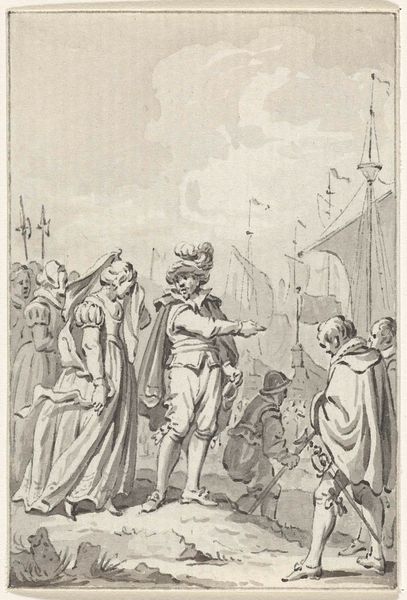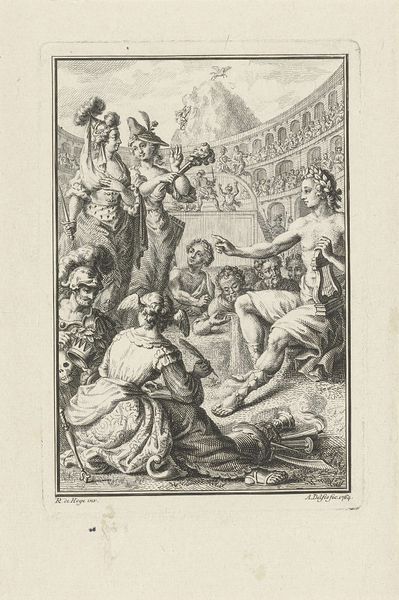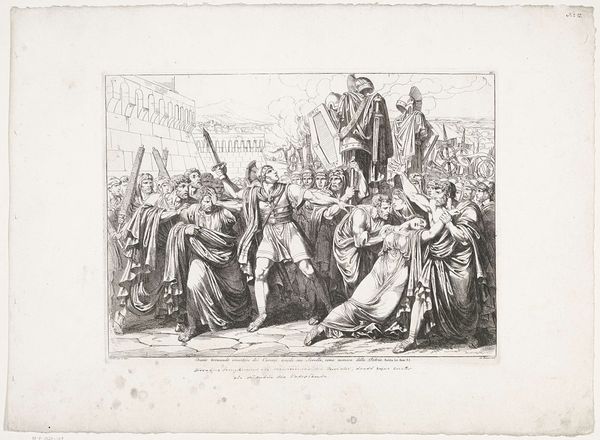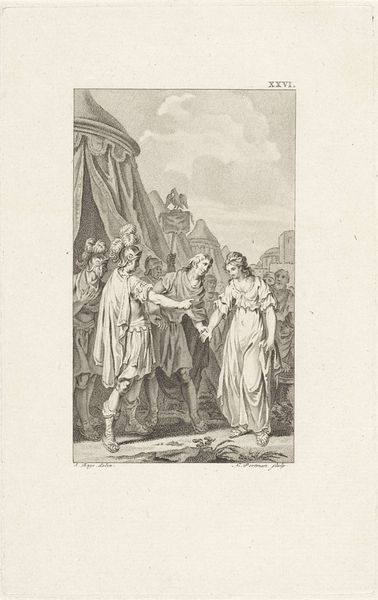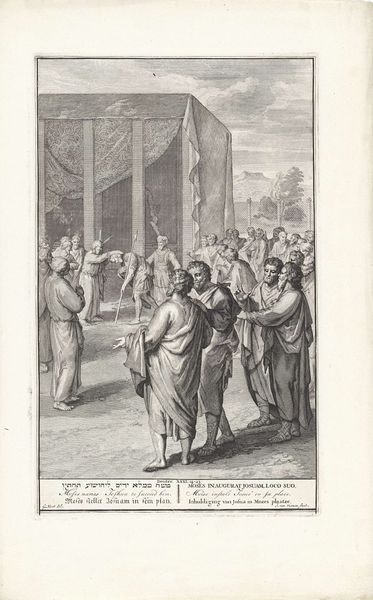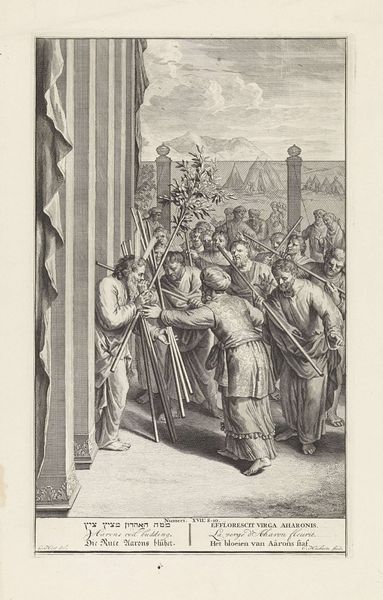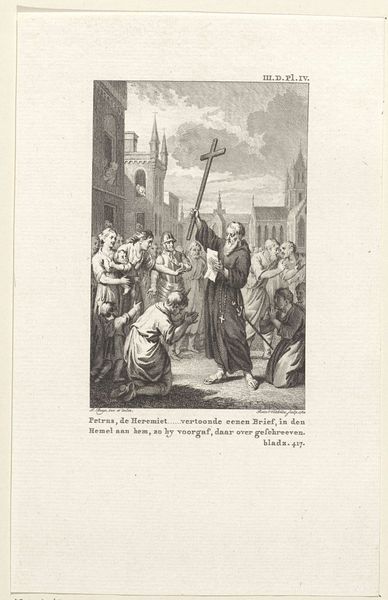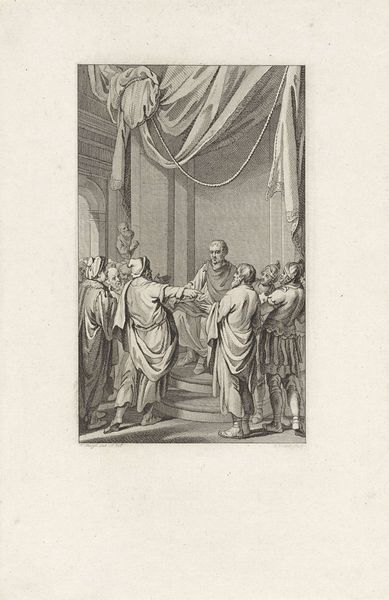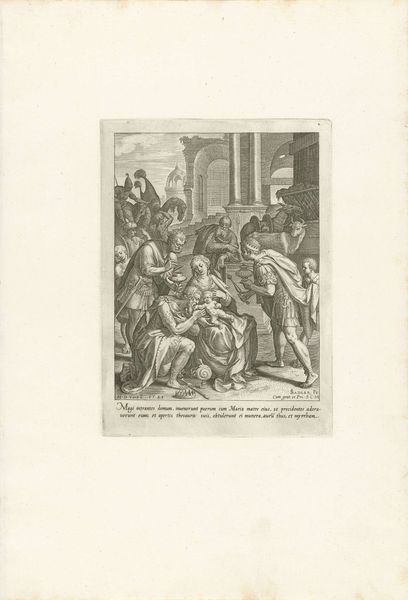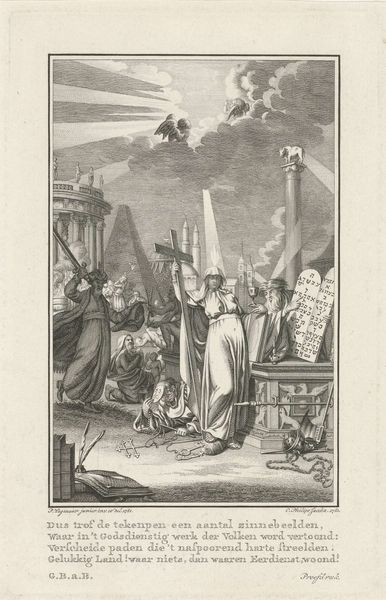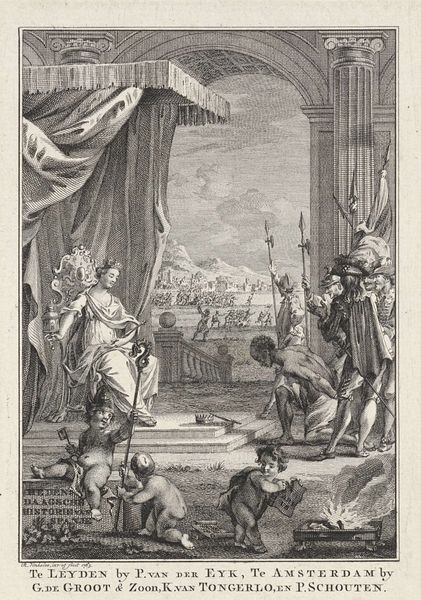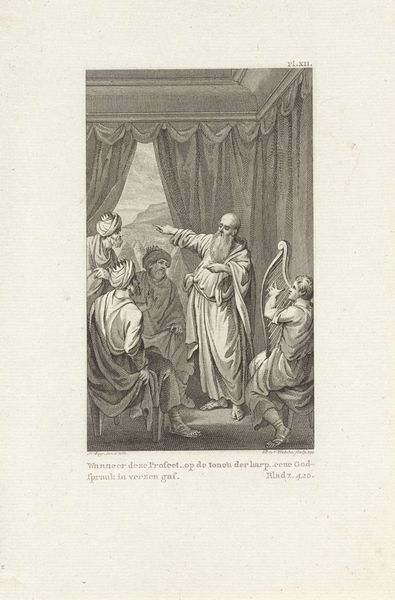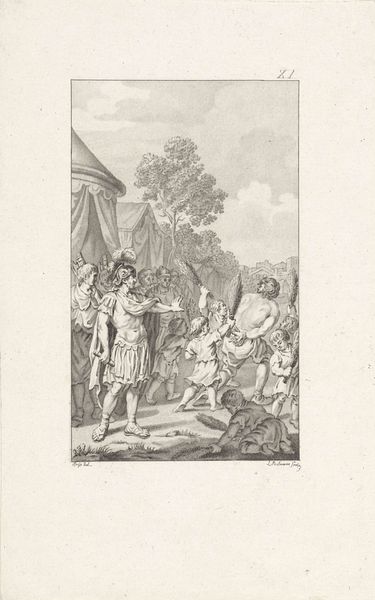
engraving
#
narrative-art
#
old engraving style
#
classicism
#
history-painting
#
engraving
Dimensions: height 230 mm, width 150 mm
Copyright: Rijks Museum: Open Domain
Curator: Today, we’re looking at “Scipio en de bruid van Numantia,” or “Scipio and the Bride of Numantia,” a historical engraving from 1781 by Reinier Vinkeles. Editor: The visual language is strikingly poised. Even rendered in such limited tones, it exudes the composed formality expected of classicism, yet it feels…distant, perhaps even cold, despite depicting a dramatic exchange. The precise line work contributes to that sterile feeling. Curator: Precisely. Vinkeles masterfully utilizes line to delineate form and space. Note how the engraver’s skill creates varied tonal values, conveying texture and depth solely through the density and direction of the lines. He evokes classical ideals, evident in the balanced composition and the subjects’ idealized forms. Editor: It's an interesting tension, though, given the story itself likely dealt with messier realities. I wonder about the materials and production; how many hands were involved? How was this image meant to circulate? Was this fine art or ephemera of some kind meant for much broader consumption? The printing and dissemination process shaped how audiences experienced it. Curator: Context indeed informs our interpretation. The scene shows the Roman general Scipio returning a Numantian bride to her betrothed, emphasizing Roman virtue and power. This virtuous depiction advances notions of enlightened civility and empire-building. The spatial relationships and pyramidal groupings, particularly centering Scipio, reinforce the narrative's hierarchy. Editor: Looking at the practical side of the original intention would provide nuance and push back against potentially biased visual stories that have survived. It invites considerations of cultural consumption and power dynamics far beyond the surface aesthetics of the image alone. Curator: Absolutely. Studying Vinkeles’ composition allows one to see how visual storytelling supported these very societal structures and moral ideologies. Editor: The power of such images resides in how their creation, distribution and materiality informed societal dialogue—long before ideas about their supposedly inherent formal value arose. It encourages asking ourselves how that interplay continues with our current consumption of images today.
Comments
No comments
Be the first to comment and join the conversation on the ultimate creative platform.
